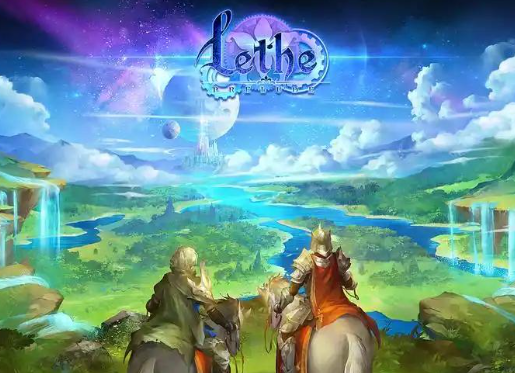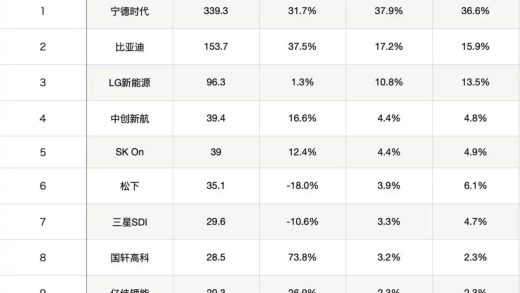
Positive Comments: The Ebb of Hot Money Forces the Industry to Return to Rationality, and the Game Startup Ecosystem Evolves towards Diversification and High – quality
The drastic change in the Chinese game startup environment, although manifested as the “ebb of capital,” has unexpectedly promoted the transformation of the industry from “reckless expansion” to “rational in – depth development.” The positive significance of this transformation is reflected in the triple optimization of entrepreneurs’ mentality, market ecosystem, and investment logic.
Firstly, the ebb of hot money has eliminated speculators, leaving behind true “passion – driven” creators. As mentioned in the news, when VCs withdrew on a large scale after 2021, “naturally, there were fewer developers who came for the money.” Now, most of the entrepreneurs remaining in the industry are “people who seriously create works.” For example, after Bai Xu’s XR project failed to secure financing, he chose to return to the familiar rhythm game field, self – financing the development with a small team of three people, with the clear goal of “controlling the total R & D and distribution costs within 2 million yuan.” Indie game producers pay more attention to the completion and content expression of the demo rather than “telling stories with PPT.” This change from “chasing trends” to “creating works” is essentially the clearing of industry bubbles. When capital no longer pays for “false demands” and “false innovations,” teams with real content creation capabilities and game ideals can survive, laying the foundation for the upgrade of the Chinese game industry from a “traffic – based business” to a “cultural product.”
Secondly, the rise of indie games and casual mini – games has promoted the diversified development of the market ecosystem. In the indie game field, distributors have become an important source of funds, and their investment logic focuses more on “whether the product can be successfully launched” rather than “whether the company can go public.” Under this model, indie game teams focus more on gameplay innovation and artistic expression. For example, among the indie game projects that Laisan Laboratory is concerned about, some teams show uniqueness in art and themes (such as the sub – variants of “Metroidvania” and “Rogue – like” games). Casual mini – games, through the “traffic arbitrage” model, meet the market demand for lightweight and fragmented entertainment. The case of Yesterday’s Song shows that even if a product has limited originality (such as a “pixel – style Vampire – Like” game), as long as it accurately captures the window period of market supply – demand imbalance (high demand but insufficient supply from overseas players), it can still make quick profits. This diversified ecosystem of “big products + small and beautiful ones” avoids the homogenization under the monopoly of leading enterprises and provides more choices for different types of players.
Finally, the change in investment logic forces entrepreneurs to strengthen their “sustainable operation ability.” Traditional VCs have withdrawn from the early – stage market due to “difficult exit paths” and “unstable returns,” and large companies have turned to acquiring “leading enterprises with high certainty.” New institutions such as Laisan Laboratory pay more attention to the “risk – resistance ability” and “execution resilience” of teams. This change prompts entrepreneurs to shift from “burning money for expansion” to “stable operation”: Bai Xu’s new team strictly controls costs, Yesterday’s Song sets a stop – loss line for each project, and indie game teams cover living costs through part – time jobs. These practices essentially represent a return to “business rationality.” When external funds are no longer readily available, entrepreneurs must learn to verify models and accumulate users with limited resources. This ability is precisely the core competitiveness for enterprises to survive economic cycles.
Negative Comments: The Financing Winter Suppresses Early – stage Innovation, and the Imbalanced Market Structure Increases the Survival Pressure on Small and Medium – sized Teams
Although the ebb of hot money has brought about a return to rationality, the drastic change in the game startup environment has also exposed many structural problems, especially the obstruction of early – stage innovation, the increasing survival pressure on small and medium – sized teams, and the risk of an imbalanced market ecosystem.
Firstly, the withdrawal of VCs has led to a lack of financial support for early – stage innovation, which may weaken the long – term competitiveness of the industry. According to news data, after the mobile game investment boom reached its peak in 2021, the financing amount and the number of transactions dropped by nearly half in 2022. In the first half of 2025, only 200 million US dollars in financing and 35 transactions were completed. Early – stage entrepreneurs (such as Bai Xu’s XR project) have difficulty obtaining investment at the “PPT stage,” and indie game teams need to create a “demo with acceptable completion” before they can approach distributors. Many potential new technologies (such as the combination of XR, AI, and games) or new gameplay (such as cross – platform interactive games) may die due to a shortage of funds. The hidden danger of this situation is that early – stage projects are often the “testing ground” for industry technological breakthroughs and gameplay innovations. If there is a lack of capital support, the Chinese game industry may lose its “first – mover advantage” in future global competition.
Secondly, the monopoly of leading enterprises squeezes the space of small and medium – sized developers, and the market structure tilts towards a “pyramid imbalance.” Large companies acquire market share and stable cash flow through mergers and acquisitions (such as ByteDance’s acquisition of Moonton and Take Two’s acquisition of Zynga), resulting in the accelerated concentration of resources towards the top. Yesterday’s Song used the phrase “an elephant stepped on a cat” to describe this phenomenon. Leading enterprises, with their overwhelming advantages in capital, traffic, and distribution channels, impact or even destroy small and medium – sized enterprises in the mid – level vertical fields (such as medium – sized studios focusing on niche categories). In this situation, small and medium – sized teams either “hide in the cracks” (such as focusing on indie games or overseas casual mini – games) or are forced to engage in “homogeneous competition” with large companies (such as imitating popular gameplay). In the long run, this may lead to a lack of innovation motivation in the market, and users may face the dilemma of “all games looking the same.”
Finally, the “high – risk model” of casual mini – games cannot support the sustainable development of the industry. Casual mini – games rely on traffic arbitrage and platform rules (such as the distribution mechanisms of Google and Steam). Their profit – making logic is based on “quickly verifying gameplay – mass – replicating – earning short – term profits,” which is essentially “opportunism” rather than “long – termism.” The case of Yesterday’s Song’s company almost going bankrupt due to Google’s mis – blocking exposes the fragility of this model. A slight adjustment in platform policies (such as account blocking or changes in the revenue – sharing ratio) or a rapid shift in market trends (such as the decline of the “Vampire – Like” craze) can be “fatal to the team within half a year.” In addition, the problem of homogenization of casual mini – games is serious (such as a large number of “Rogue – like” and “Metroidvania” products). In the long run, this may cause user aesthetic fatigue and further compress the survival space.
Suggestions for Entrepreneurs: Find a Balance between Rationality and Innovation and Build Core Anti – cycle Abilities
Facing the game startup environment in the post – VC era, entrepreneurs need to shift from “relying on external capital” to “strengthening internal capabilities,” seizing niche opportunities while controlling risks. Here are some specific suggestions:
- Control the scale and focus on lightweight and vertical directions: Avoid blindly expanding the team or pursuing “big – budget productions.” Refer to Bai Xu’s model of a small team of three people (controlling R & D costs within 2 million yuan) or Yesterday’s Song’s “husband – and – wife team + outsourcing” model. Choose small and beautiful vertical fields (such as rhythm games and narrative indie games) or niche tracks of overseas casual mini – games (such as localized products in the Middle East and Southeast Asia). Lightweight operation can reduce the cost of trial – and – error and improve flexibility.
- Strengthen cash – flow management and reduce dependence on external financing: After the ebb of hot money, it is difficult to obtain external financing. Entrepreneurs need to attach importance to their own funds and project cash – flow. They can obtain early – stage income by taking on outsourcing projects (such as developing customized content for large companies), developing in stages (such as first launching a demo to test market feedback), and participating in game exhibitions (such as IndieCade). It is necessary to balance the investment in outsourcing and self – owned products to avoid falling into the long – term dilemma of “working for others.”
- Improve the team’s “frustration – resistance ability” and build a “small but strong” core team: The investment logic of Laisan Laboratory shows that “team quality” is the key to surviving economic cycles. Entrepreneurs should first form a small team with diverse skills (such as development, operation, and marketing) and cultivate the ability to “quickly adjust strategies” (such as Bai Xu’s shift from XR to rhythm games and Yesterday’s Song’s seizing the “Vampire – Like” trend). At the same time, leaders need to have “resilience under pressure” and remain calm when facing a shortage of funds or under – performing products, avoiding team collapse due to emotional decision – making.
- Pay attention to the combination of “content innovation” and “business planning”: Indie game teams should avoid homogenization and highlight uniqueness in art style (such as Chinese style and cyberpunk), gameplay mechanisms (such as combining puzzle – solving and action), or themes (such as history and science fiction). Entrepreneurs of casual mini – games can inject localized innovation into “traffic arbitrage” (such as adapting gameplay according to the cultural preferences of overseas users) to enhance the irreplaceability of the product. At the same time, they need to formulate a clear business plan, clarify the profit – making model (such as advertising monetization and in – app purchase revenue – sharing) and exit path (such as being acquired or operating independently) to increase their attractiveness to distributors or new investment institutions (such as Laisan Laboratory).
- Diversify external risks and pay attention to policy and platform rule changes: Casual mini – games rely on platform distribution (such as Google and Steam). Entrepreneurs need to closely monitor platform policies (such as account – blocking rules and content review standards) and market trends (such as the preferences of overseas “Gen Z” users) and establish a multi – platform distribution strategy (such as simultaneously deploying on iOS, Android, and PC) to diversify risks. Indie games can expand their markets by participating in international game exhibitions (such as GDC and Tokyo Game Show) and cooperating with overseas distributors to reduce dependence on a single region.
Game startups in the post – VC era are both a “winter” and a “reshuffle period.” Entrepreneurs need to base on “rational operation” and take “content innovation” as the core, finding a survival space between the “elephants” of leading enterprises and the “ants” of niche fields. Only in this way can they truly achieve long – term development by “navigating uncertainties” in the fluctuations of the industry cycle.
- Startup Commentary”Building LLMs: The Knowledge Graph Foundation Every AI Project Needs”
- Startup Commentary”The 17th Year of Tmall Double 11 and the New Map Rewritten by AI”
- Startup Commentary”How to Prepare Your Data for Artificial Intelligence”
- Startup Commentary”Small and Medium-sized Banks: “Cutting the Tail” in Loan Assistance”
- Startup Commentary”The Six AI Giants on Stage: AGI Is No Longer a “Future” Thing”





